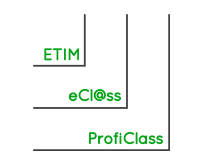BMEcat standard
The growth of e-commerce in recent years has necessitated the creation of standards for product data exchange. One of the most widely used standards, based on the XML format, is BMEcat. The first version, which defined the standard for product data exchange between manufacturers and customers, was approved as early as 1999.
The BMEcat format has a strictly defined structure, with many attributes that can be either mandatory or optional. It allows the inclusion of the following types of data:
- Supplier and customer information
- Product identifiers
- Logistical data
- Pricing and ordering information
- Product-specific attributes
- External classifications, e.g., ETIM, eCl@ss
- Photographic material, graphics
- Files and certificates
- A hierarchical tree structure
- Information about accessories
Classifications
The creation of classification systems was a response to the informational chaos in the market. Previously, each player defined their own attributes for describing specific product groups. As long as this information was used internally, it did not cause problems.
However, issues arose when product descriptions needed to be shared with other entities. Industry organizations and groups of companies began developing standard classification systems. These systems typically include a class (product type) and a set of attributes described in a standardized way, common to the entire class.
Currently, the most popular classification systems are:
- eCl@sss – covers many product and service industries and is the only system compliant with IEC/ISO standards
- ETIM – a standard for the electrical engineering industry, notable for being the only one with a full Polish translation
- ProfiClass – a popular system in the construction and industrial sectors
- UNSPSC – an open, multi-industry standard managed by GS1 US™, featuring over 20,000 categories
ETIM classification
The ETIM (European Technical Information Model) classification is one of the few classification systems translated into Polish and is an essential tool for collaboration with other entities in the electrical engineering industry. It is fully implemented in the PIM systems provided by our company.

Custom classifications
Managing classifications in PIM systems offers numerous benefits. It allows editing in Excel, enabling efficient input of large amounts of repetitive values. PIM systems also provide the ability to map common attributes, allowing for the automatic transfer of values between identical attributes in different classifications, as required by the BMEcat format.

Benefits of Managing Classifications in a PIM System
A benefit of managing classifications in PIM systems is the ability to create and maintain a custom internal classification system. This allows a focus on product strengths and better fulfillment of specific requirements. For more detailed information on this topic, visit the page – PIM implementations.

Mass editing in Excel
Using Excel is probably the most efficient way to input large amounts of repetitive values. Both export and import are performed automatically, with the user simply filling in the required values.

Mapping of common attributes
Built-in attribute mapping mechanisms in PIM allow automatic transfer of values between identical attributes in different classifications or between custom attributes and those required by the BMEcat standard. This ensures data consistency.

Simultaneous support for multiple classification systems
There are no limits to the number of classifications that can be maintained simultaneously. These may include systems like eCl@ss, ETIM, or UNSPSC.
This also applies to subsequent versions of the same standard, which evolve over time. External systems can be complemented with a custom internal classification system.
ETIM w kilka godzin, nie miesięcy – zatrudnij narzędzie getName.ai!
Masz już system PIM. Ale tak się składa, że w posiadanym narzędziu nie można szybko i łatwo mapować atrybutów. Albo nie można edytować dane ETIM w Excelu. To oznacza, że w tym momencie dochodzisz do dwóch najtrudniejszych zadań:
- Przypisanie wszystkim grupom produktowym odpowiedniej klasę ETIM
- Uzupełnienie wszystkich atrybutów technicznych przewidzianych przez ETIM dla ... tysięcy, czasem dziesiątek tysięcy pozycji.
Perspektywa tygodni lub miesięcy ręcznej pracy z zespołem produktowym lub konieczność zatrudnienia dodatkowych osób może skutecznie opóźnić (albo nawet zablokować) wdrożenie ETIM. Właśnie dlatego stworzyliśmy getName.ai - narzędzie, które:
- analizuje opisy techniczne produktów (pliki tekstowe, strony produktowe, karty katalogowe PDF)
- automatycznie rozpoznaje klasę ETIM produktu (chyba, że wolisz podać swój wybór klasy)
- identyfikuje i przypisuje wartości atrybutów zgodne ze słownikami ETIM (np. napięcie, materiał, sposób montażu, klasa ochrony, itd.)
- działa w wielu językach
- wspiera wersje ETIM 7.0 – 10.0
- umożliwia masowe przetwarzanie danych, nawet dla tysięcy produktów w kilka godzin
- łatwe do integracji z dowolnym systemem PIM lub dowolną bazą produktową - prosta do zaimplementowania komunikacja przez API REST
Zamiast budować wartości atrybutów od zera, skorzystaj z danych, które już masz. getName.ai przeanalizuje je i sam dopasuje to, co potrzebne do zgodności z ETIM.
Co zyskasz dzięki wykorzystaniu narzędzia getName.ai:
- skrócisz czas wdrożenia ETIM z miesięcy do dni,
- unikniesz powtarzalnej, kosztownej pracy ręcznej,
- szybciej przekażesz klasyfikację do klientów, hurtowni, platform e-commerce.
Dowiedz się więcej:
https://getname.ai/pl/blog/wdrozenie-etim-czy-to-musi-bolec
https://getname.ai/pl/blog/automatyzacja-generowania-atrybutow-klasyfikacje-marketplace
